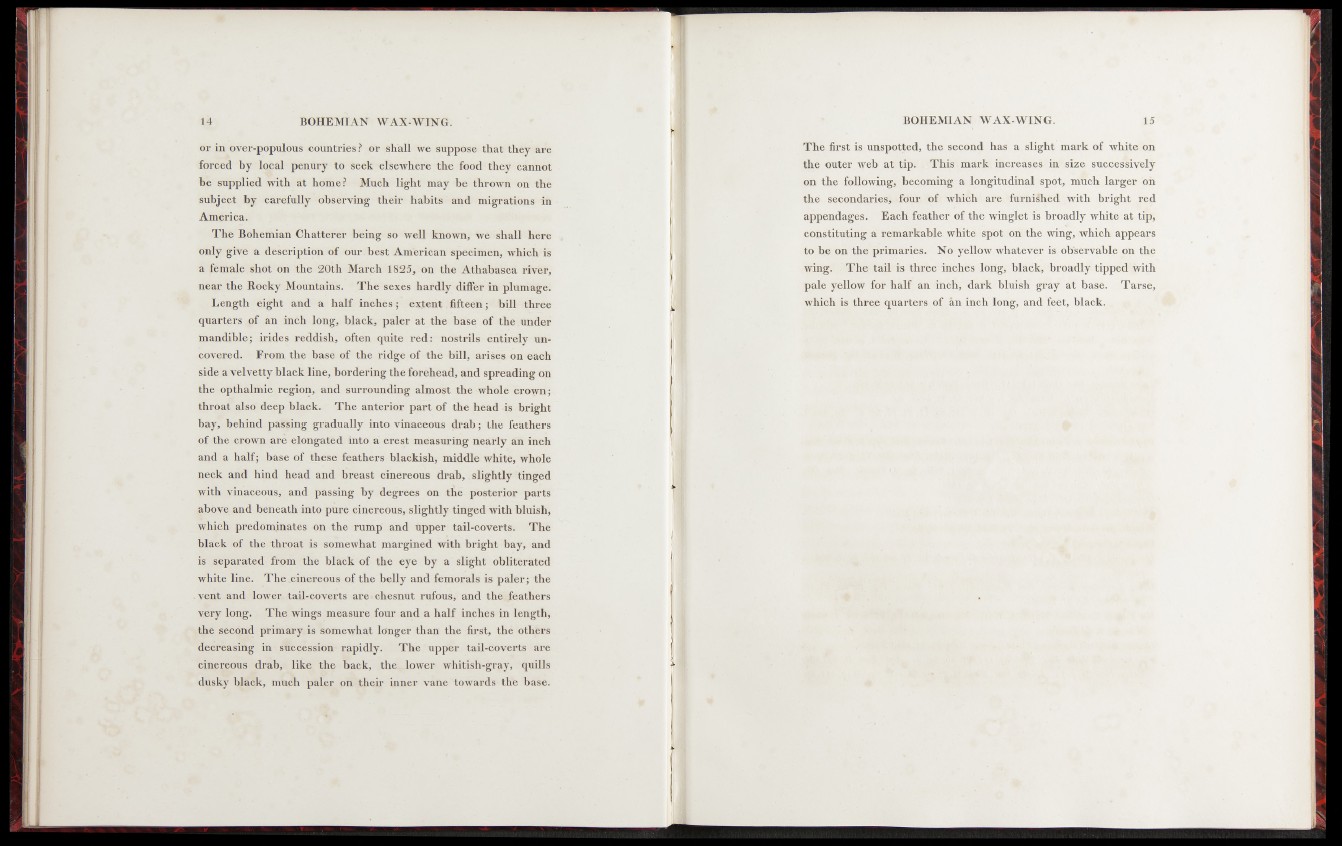
or in oyer-populous countries ? or shall we suppose that they ai*e
forced by local penury to Seek -elsewhere the food they cannot
■fee supplied with at home ? Much light may be throw'll on the
subject by carefully observing their habits and migrations in
America.
The Bohemian Chatterer being so well known, we shall here
only give a description of our. best American specimen, which is
a female, shot on the 20th March 1825, on the Athabasca river,
near the Rocky Mountains. The sexes hardly differ in plumage.
Length eight and a half inches ; extent . fifteen ; bill three
quarters an inch long, black, paler at the base of the.under
mandible ; irides reddish, often quite red: nostrils entirely uncovered.
From the basé of the ridge of the bill, arises on each
side a velvetty black line, bordering the forehead, and spreading on
the opthalmic region, and surrounding almost the whole crown;
throat also deep black. The anterior part of the head -is bright
bay, behind passing gradually into vinaceous drab ; the feathers
of the crown are elongated into a crest measuring nearly an inch
and a half; base of these feathers blackish, middle white, whole
neck and hind head and breast cinereous d ra b ,, slightly tinged
with vinaceous, and passing by degrees on the posterior parts
above and beneath into pure cinereous, slightly tinged with bluish,
which predominates on the rump and Upper tail-coverts. The
black of the throat is somewhat margined with bright bay, and
is separated from the black of the eye by a slight obliterated
white line. The^cinereous of the belly and femorals is paler; the
vent and flower® .tad-coverts are.chesnut rufous, and the .feathers
very long. g The wings measure four and a half inches in length,
the secdjad primary is somewhat longer than the first, thé others
decreasing inPrecession- rapidly. The upper tail-coverts are
cinergous drab, like the back, the^lower whitish-gray, quills
dusky black, mtwlh paler on their inner vàne towards- th*e base.
The first is unspotted, the second has a slight mark of white on
the outer web at tip. This.mark.increases in size successively
on ijlie following, bc.coming a longitudinal spQt,. much larger on
thé secondariés-Mfour oft which are furnished with bright red
appendages. Each feather of the winglet is broadly white at tip,
constituting a remarkable white spot on the wing, which appears
to be on the primaries. No^yellow- whatever is observable; an the?
wing. The tail is three inches lotfg, black, broadly tipped .with
pale yellow for half an inch, dark bluish gray at base. Tarse,
which is three quarters of an inch long, and feet, black. .